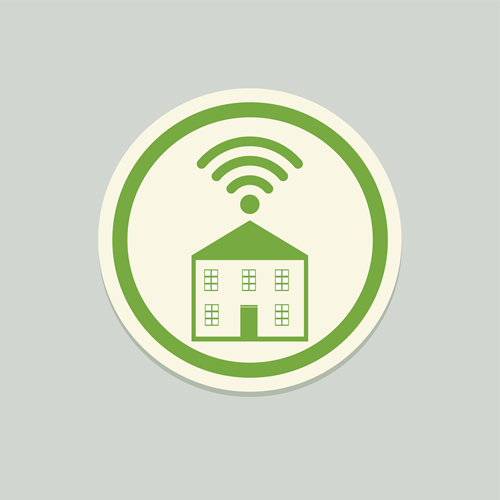Today’s K-12 schools are facing a complex web of needs, technologies, and regulations. Digital transformation has led to an expectation by students and faculty of constant connectivity to their school’s web assets. In response, schools have been incorporating programs that allow for more devices and a more web-focused curriculum. These services are critical, but they come at a great cost. Paying for internet access and securing the network do not come cheap.
The E-rate program was developed by the Federal Communications Commission (FCC) and its subsidiary, the Universal Services Administrative Committee (USAC), to provide federal funding to K-12 schools and public libraries across the country. E-rate gives schools access to necessary technology they otherwise may not be able to afford. In fact, 87 percent of E-rate applicants report that this funding is vital to meeting their connectivity goals.
There are two categories of funding in the E-rate program. Category one funding provides data transmission and internet access. Category two funding supports the critical infrastructure required for security, speed, and compliance, offering schools $150 per student.
(Next page: 4 E-rate questions for district coordinators and IT teams)
The importance of CIPA compliance
A primary requirement for E-rate funding is compliance with the Children’s Internet Protection Act (CIPA), which was enacted in 2000. This federal law requires schools to have certain cybersecurity features in place. CIPA seeks to protect the personal information of minors from unauthorized viewers and to keep minors from accessing inappropriate material online.
As technology becomes prolific in the classroom and cyberattacks become increasingly sophisticated, adopting technology and cybersecurity strategies that ensure CIPA compliance has become more important, albeit more difficult. IT teams must combat ransomware, phishing attacks, and social engineering at the same time that the number of endpoints accessing their network rises. Moreover, the increase in device and bandwidth use that requires in-depth network security also means higher costs for IT budgets.
In addition to providing access to devices, applications, and Wi-Fi while on school grounds, IT teams must ensure their tech infrastructure can stand up to an increased number of endpoints as students and staff alike continue to bring their own devices. Bandwidth costs, access points, switches, caching, and other infrastructure amount to huge costs for education IT budgets and can prevent them from using funds for programs such as digital curricula and education-focused applications.
Approximately $4 billion is available to help offset these costs through E-rate, but schools must demonstrate that they comply with CIPA’s ordinances. This is why CIPA compliance, cybersecurity, and technology use go hand in hand.
Questions to ask
E-rate funding is critical for the majority of schools in the U.S., and security is for all of them, so applicants must do everything possible to educate themselves and submit an on-target application in the appropriate category or in both categories, depending on need.
Applicants are using the E-rate program to request technology appliances, subscription services, and professional services. Of the two categories for funding, category one has more funds available. Schools need to carefully consider which category makes the most sense for their requests. The following questions will help in that assessment.
1. What is our school’s technology landscape?
Are students bringing their own devices, using those provided by the school, or a mix of both? What is the ratio of devices used per student? These are important factors to consider when devising an infrastructure plan.
As a basis for comparison, the Consortium for School Networking (CoSN) found that 37 percent of school systems reported one device per student, and 21 percent reported two or more devices per student, a number that is expected to climb to 65 percent by 2019.
How many devices are in use impacts both bandwidth capacity and the number of access points required to accommodate this traffic. This is typically compounded by the fact that, in many cases, students own these devices and not the school. BYOD policies bring greater security risks and increase the possibility of data breach due to devices operating in multiple networks. Considering the sensitive information schools maintain, this can come at a high cost.
2. What are our IT management resources?
As schools are being asked to do more with less, it is important when assessing infrastructure solutions to consider visibility and ease of management across devices. Having a unified management interface that can monitor multiple point solutions helps support limited IT personnel and resources.
3. What is the price tag of the solution we want, and how does that factor into the E-rate selection process?
Price is the most important consideration when assessing vendor bids for E-rate funding, as mandated by USAC. Cost is given the most weight in vendor evaluations and must be justified to receive funding. This requires careful comparison shopping and vetting.
4. What solutions are eligible?
Depending on why you’re asking for E-rate funding, you can get from 100 percent funding support to 0 percent. It is important for applicants to ask their vendors and partners prior to filing what is really E-rate eligible. These groups are knowledgeable and can help you avoid making mistakes on your application that could cost you dearly.
Safety before funding
After determining which solutions your school needs, you must ensure compliance with a variety of regulations to get them. In addition to CIPA, schools applying for E-rate are bound by strict regulations from the FCC and USAC to ensure safe internet use by children.
A robust cybersecurity strategy can bring your IT infrastructure up to CIPA requirements with a security fabric approach that integrates web filtering, antivirus, and firewall, combined with threat intelligence and regular updates to help identify and block the latest threats. With a comprehensive program in place to keep children safe online, the likelihood that your school will receive E-rate funding increases significantly.
- 4 ways to encourage play in education - April 25, 2024
- CoSN IT Leader Spotlight: Lisa Higgins - April 25, 2024
- It’s time to pay student teachers - April 25, 2024

